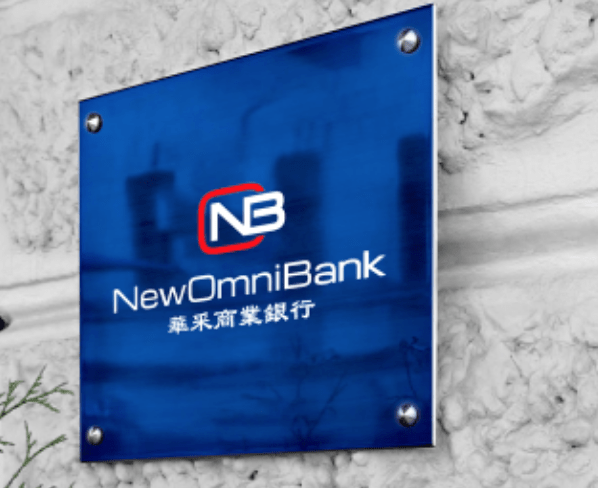Your Guide to Commercial Real Estate Loans for Los Angeles SMEs
Key Takeaway
- Diverse Loan Purposes: CRE loans cater to a variety of business needs, such as acquisition, development, refinancing, bridge, construction, and renovation loans, each catering to different facets of real estate investment and development.
- Strategic Investment and Financing: CRE loans are not just financial instruments; they’re strategic investments in your business’ future. Whether it is purchasing a new commercial property or refinancing it to better terms, each loan type serves as a steppingstone towards achieving long-term success in the competitive Los Angeles market.
- Understanding Lender Criteria: The 4 Cs - Character, Capacity, Collateral, and Capital—play a crucial role in the approval process for CRE loans. A strong financial foundation, coupled with a viable commercial property as collateral, enhances your business's credibility in the eyes of lenders.
- Navigating the Underwriting Process: The CRE underwriting process is meticulous, assessing both the borrower's financial health and the commercial property’s income-generating potential. Preparation, transparency, and strategic planning are key to successfully securing a CRE loan.
- Choosing the Right Financial Partner: Partnering with a bank that understands the unique landscape of Los Angeles and is committed to supporting small businesses is essential. New Omni Bank stands ready to offer tailored CRE financing solutions, guiding businesses through every step of their commercial real estate journey.
At their core, Commercial Real Estate (CRE) loans are designed for businesses aiming to purchase, develop, or refinance commercial properties. These properties can range from office buildings and retail spaces to warehouses and multifamily housing units designed for business rather than personal use.
Unlike residential loans, which are primarily based on the borrower’s personal credit and income, CRE loans are predominantly secured by the property itself, focusing on the investment’s potential profitability and the business’ operational stability.
Commercial Real Estate Loans by Purpose
CRE loans can be categorized based on the intended use of the financing, each serving different facets of real estate investment and development. Here’s how CRE loans can vary by purpose:
- Acquisition Loans: These loans are designed for businesses looking to purchase new commercial properties. Whether expanding to a second location, moving to a larger space, or investing in income-generating real estate, acquisition loans provide the necessary capital for these significant purchases. In Los Angeles, where property values are high, a well-structured acquisition loan can be the key to securing real estate.
- Development Loans: For businesses aiming to develop raw land into commercial use properties, development loans offer the financial backing to bring these projects to life. From ground-up construction of office buildings to developing a retail complex, these loans cover a range of development costs, including land purchase, construction, and related expenses until the project becomes income-generating.
- Refinancing Loans: Refinancing loans are utilized by businesses seeking to improve the terms of an existing CRE loan. This could involve securing a lower interest rate, altering the loan term, or accessing equity built up in the property. In a dynamic market like Los Angeles, refinancing can provide significant financial relief or free up capital for further investment.
- Bridge Loans: Bridge loans are short-term financing options used to cover the immediate costs of purchasing or developing a property before securing long-term financing. These loans are particularly useful for investors who need to act quickly on a property purchase or for developers awaiting approval on a more substantial loan.
- Construction Loans: Specifically designed for financing the construction of new commercial buildings, construction loans provide funds in stages based on the completion of predetermined construction milestones. This type of loan is ideal for SMEs looking to construct custom facilities or for real estate developers launching new commercial projects.
- Renovation Loans: For businesses aiming to upgrade, remodel, or expand existing commercial properties, renovation loans offer the capital needed to rejuvenate and enhance the value of commercial real estate. These loans can help Los Angeles businesses stay competitive by modernizing facilities or expanding operational capacity.
How CRE Loans Function in California and Los Angeles
The commercial real estate market in California, with Los Angeles as a focal point, is characterized by its diversity and dynamic nature. The state’s robust economy, coupled with Los Angeles’ role as a global business hub, makes it an attractive location for commercial investment. However, this desirability also brings about competition, driving the need for strategic financial planning and access to capital through CRE loans.
Key Features of CRE Loans
- Loan Structure: CRE loans typically have a term of 5 to 20 years, with the amortization period often exceeding the loan term, resulting in a balloon payment at the end of the term. Interest rates may be fixed or variable, depending on the lender and the specific terms of the loan.
- Loan-to-Value Ratio (LTV): In Los Angeles and throughout California, lenders usually offer CRE loans with an LTV ratio of up to 75%. This means borrowers need to provide a down payment of at least 25% of the property’s value, ensuring that they have significant equity in the investment.
- Debt Service Coverage Ratio (DSCR): Lenders also evaluate a property’s DSCR, which measures the property’s ability to generate enough income to cover the loan payments. A DSCR of over 1.25 is generally preferred, indicating that the property generates sufficient income to meet its debt obligations.
- Prepayment Penalties: Given the long-term nature of these loans, prepayment penalties are common to protect the lender’s expected yield on the loan.
Empty heading
The 4 Cs Lenders Use to Make Decisions on Granting Loans
Lenders evaluate CRE loan applications using the 4 Cs: Character , Capacity, Collateral, and Capital. This framework helps assess the risk involved in loaning to businesses and ensures that loans are granted to enterprises with solid repayment plans.
- Character evaluates your credit record, credit history, repayment history, etc., to understand if you possess qualities of integrity and trustworthiness.
- Capacity evaluates your business’ ability to repay the loan, considering revenue streams, cash flow, and other financial obligations. Lenders want to ensure that your operations generate sufficient income to cover loan payments on top of your regular expenses.
- Collateral involves the assets you pledge against the loan, providing lenders with a security net. In CRE loans, the property itself usually serves as collateral, with its value playing a significant role in the loan’s terms.
- Capital looks at the resources you have at your disposal, including down payments, investments, and savings. A substantial amount of capital on hand demonstrates your commitment to the investment and reduces the lender’s risk.
Empty heading
How to Get a Commercial Real Estate Loan
The process of securing a CRE loan, while detailed, can be navigated successfully with the right preparation and understanding. Here’s a step-by-step guide to obtaining a CRE loan:
- Evaluate Your Financing Needs: Start by clearly defining the purpose of your CRE loan. Are you purchasing a new property, refinancing an existing loan, or funding construction? Your financing needs will determine the type of CRE loan that’s best for your business.
- Understand the Lender’s Criteria: Familiarize yourself with the 4 Cs as these are key factors lenders consider when evaluating loan applications. Additionally, understand the importance of the property’s Cap Rate and how it influences the loan decision.
- Prepare Your Financial Documents: Gather all necessary financial documents that lenders will review. This typically includes business financial statements, tax returns, a detailed business plan, and projections for the property’s income potential. For development or construction loans, detailed project plans and cost estimates are also required.
- Choose the Right Lender: Research potential lenders, including banks, credit unions, and private lenders, to find one that aligns with your needs and has experience in financing the type of property you’re interested in. Consider lenders like New Omni Bank, known for their commitment to Los Angeles SMEs and expertise in CRE loans.
- Submit a Loan Application: Once you’ve selected a lender, complete a loan application. Be thorough and provide all requested information to avoid delays. Your lender may also require a property appraisal and an environmental assessment as part of the application process.
- Go Through the Underwriting Process: The underwriting process involves a comprehensive review by the lender of the borrower’s credit history, financial statements, and business model, aimed at assessing the abovementioned 4 Cs. Be ready to provide any additional information requested by the lender. Additionally, lenders consider external factors—such as market trends and location specifics—which hold particular significance in the diverse Los Angeles market. This helps ensure that the loans are extended to projects with robust financial foundations and promising potential returns.
- Negotiate Terms and Close the Loan: If your loan application is approved, you’ll receive a loan offer. Review the terms carefully, including the interest rate, repayment schedule, and any covenants or conditions. Don’t hesitate to negotiate terms that better suit your business’s needs. Once you agree to the terms, you’ll move forward with closing the loan, which involves signing the loan agreement and any other required documentation.
- Fulfill the Loan Conditions: Before funds are disbursed, ensure you meet any final conditions specified by the lender. This may include purchasing insurance for the property or completing specific legal requirements.
- Access the Funds: With all conditions met and documentation in place, the loan funds will be made available to you. Depending on the loan type, funds may be disbursed in a lump sum or in stages.
- Begin Repayment: Understand your repayment schedule and start making payments. Good financial management and timely payments can build a strong relationship with your lender, potentially easing future financing needs.
Empty heading
Empower Your Business with New Omni Bank’s CRE Loans
At New Omni Bank, we stand ready to empower Los Angeles businesses with tailored CRE financing solutions. Whether you’re looking to acquire a multi-family residence, an industrial space, or a retail complex, we have solutions that align with your objectives. Learn more about our CRE loans.
Contact New Omni Bank today to explore how our commercial real estate loans can fuel your business’ growth.








